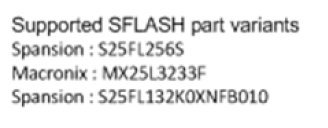Other Parts Discussed in Thread: UNIFLASH, ,
I have a new design based on the AWR1642BOOST. I had blank Quad SPI Flash chips soldered down because the bootloader flow shows that I would be able to program it. With SOP mode set to 101 (05) I get an error under Uniflash:


